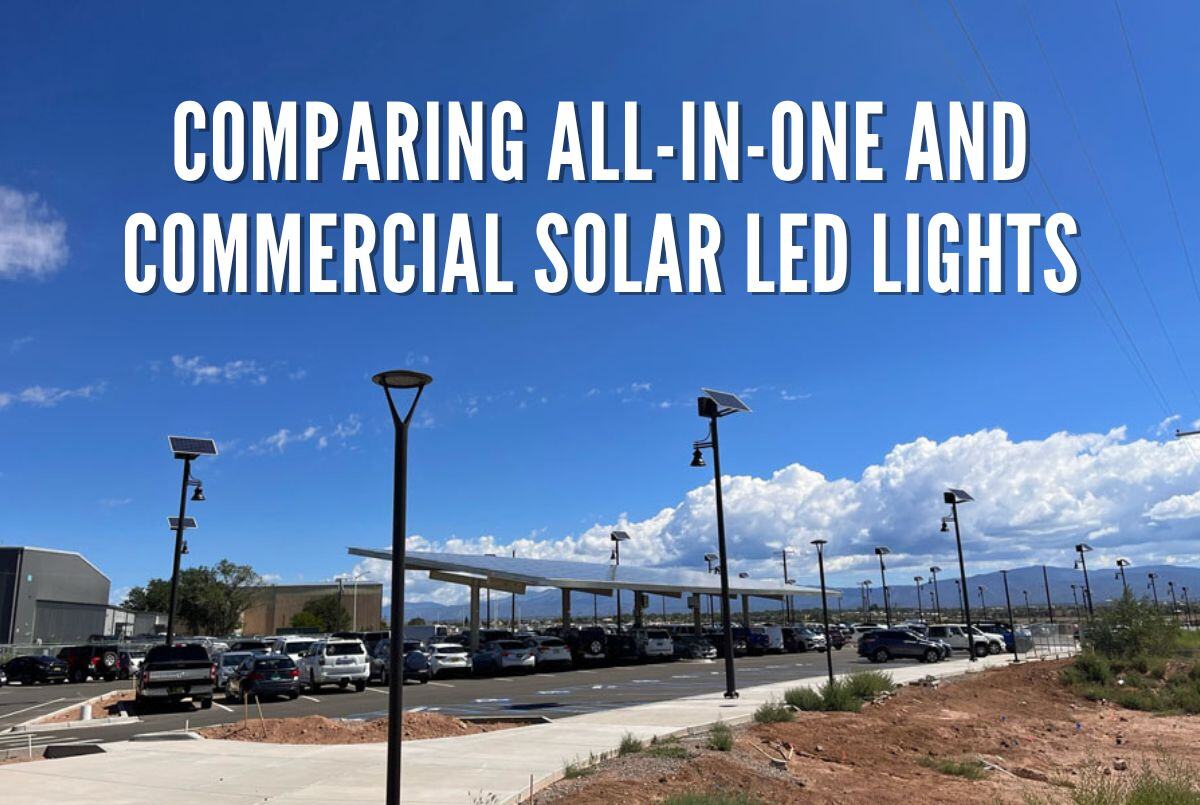


When considering solar lighting for your business, you'll encounter two main types of systems: US-manufactured commercial solar LED lights and all-in-one systems readily available from online retailers. While both claim to offer efficient, sustainable illumination, they differ considerably in design, performance, and information transparency. In this post, we will look at each design and review the pros and cons of each; plus, we have a great case study to show you.
These are custom-designed systems built to meet specific lighting needs and regulations. They typically include:
These are readily available online from retailers like Amazon, Walmart, Home Depot, and other big box stores and are often marketed with exaggerated claims and incomplete information. They typically have:
One of the biggest concerns with all-in-one systems is the lack of transparency. Manufacturers often exaggerate lumen output and other crucial metrics, leading users to believe they're getting more light than they actually are. This can be misleading and result in inadequate lighting, wasted energy, and, ultimately, buyer disappointment. It also creates problems in the solar lighting industry since all systems get lumped together, making it seem like all solar lights use these subpar components.
A recent YouTube video by Nater Tater reviewed a popular 1000W all-in-one solar light. Despite its impressive-sounding wattage, the video revealed:
Nate compares it to a 150 Watt AC light and provides overhead shots of both fixtures in separate areas of his property at night. The 1000 Watt solar light is mounted at 10' on a fence, around the same height as the AC light. This quickly shows you the difference between the 150 Watt light and the supposed 1000 Watt light.
Nate does explain that the company could mean a 1000 Watt incandescent equivalent; however, it is considered shady marketing practices not to provide that explanation. If that is the case, then it would only be around a 100 Watt LED; however, there is no documentation to show that information.
When he goes outside to check the lights, you can see a small glowing light in the sky in the background in the video. When he walks up to the light fixture and gets within about 50' or so away, the light does turn up in intensity; however, you can see the flickering of the LEDs easily in the video.
When working to determine the light output, the light even dims down on him, bringing the 75 Lux down to ~7 Lux. Again, this illumination area is just below the fixture and quickly reduces to zero around 20' out from the fixture.
He then walks back to the 150 Watt light on his barn, and it shows 200+ Lux at a distance away from the fixture and it has a much larger area of illumination. The light also has a bright spot directly under the fixture and a large illumination pattern in comparison. There is a huge difference between these two fixtures.
This example highlights the importance of accurate information and choosing reliable solutions. While all-in-one systems may seem tempting due to their lower upfront cost and easy installation, the lack of transparency and potential performance issues can ultimately outweigh the initial savings.
There is more to consider. When dealing with a stand-alone solar lighting system, the solar needs to point directly south with no shading. This is impossible with these all-in-one systems since the solar and light fixtures are one unit. Instead, the solar sits relatively flat, reducing the energy absorption in the winter months. Not having enough energy absorption will cause the light not to operate as intended, especially in high-security areas. The flat solar panel will also collect dirt and snow, causing the panel not to be able to charge correctly.
While commercial solar LED lights require a higher initial investment, they offer numerous advantages over all-in-one systems:
Investing in a commercially designed solar LED system is the wiser choice for business owners seeking reliable, efficient, and long-lasting lighting solutions. While the upfront cost might be higher, the benefits of performance, lifespan, and peace of mind are well worth the investment.
Understanding the key differences between commercial and all-in-one solar LED lights is crucial for making an informed decision. Choosing a commercially designed solution ensures transparency, performance, and long-term value for your business.
